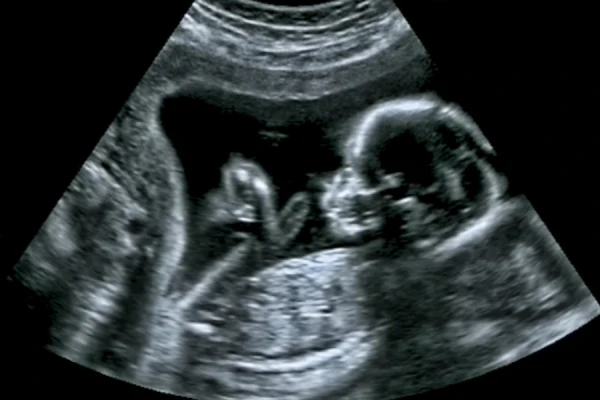
Washington D.C., Apr 2, 2019 / 02:07 pm (CNA).- A new scientific study has found significant differences in the ways that the brains of male and female fetuses function prior to birth.
Researchers conducted MRI scans on human fetuses in the womb, studying the functional connectivity (FC), or the neurological connections between different areas of the brain, for both males and females. They found connections between parts of the female brains that were almost nonexistent in the male brains.
“The present study demonstrates for the first time that development of fetal brain FC varies with sex,” the researchers wrote, concluding that the fetal brain networks they observed likely lay the “building blocks” for brain development throughout rest of the baby’s life.
Dr. Leonard Sax, a family physician and author of the 2005 book “Why Gender Matters,” told CNA that the fact that there is a difference in brain function at all— at a stage of development when a baby has not yet been exposed to any societal influences— is significant in itself.
“I think the importance of this research is that it shows that the brain of a baby girl in her mother’s womb prior to birth is significantly different than the brain of a baby boy in the mother’s womb at the same stage prior to birth,” Sax told CNA.
“Exactly what those differences signify is controversial,” he noted.
Sax wrote a March 27 article for Psychology Today summarizing the study’s findings, in which he asked why the study had received relatively little media coverage. In some parts of the brain, the differences between males and females were “truly amazing,” he wrote.
“The human brain is gendered prior to birth. That may be politically incorrect, but it is an empirical reality,” Sax stated.
“Male and female are of God. The are hardwired, they are innate.”
He cautioned that it is not yet clear to neuroscientists what exactly the gender differences in brain function might mean, in terms of how activity in the brain relates to human emotion and experience.
“How does thinking happen? How does the brain mediate the process of thought or feeling? We don’t know the answers to those questions,” Sax said.
“In my article, I make no attempt to claim what that [brain function] difference signifies, because neuroscientists don’t know.”
He said while there are “plausible” interpretations that can be made based on the data, the researchers themselves “make no attempt to guess at the significance of their own findings.”
“The claim I’m making is girls and boys are different— that image strongly supports that claim,” he said.
Sax noted in his Psychology Today article that academics such as Judith Butler have pioneered popular theories that “male” and “female” are merely social constructs.
“The category of ‘girl’ and ‘boy’ are meaningful categories, they’re not a mere performance or a social construction as Judith Butler would have us believe. And they are clearly meaningful and real prior to birth,” he said.
Sax also pointed out that The New York Times published an op-ed April 1 in which Dr. Carol Hay, a professor of philosophy at the University of Massachusetts-Lowell, endorses Butler’s understanding of gender, calling gender “fundamentally a performance” based on and learned from social systems.
Sax posited that the author is unaware of “research showing that ‘male and female’ are present in the human brain prior to birth.”
“I wouldn’t say that she is lying, I would say that she is unaware of the relevant research,” he clarified.
CNA reached out to Hay for a reply. She told CNA in an interview that when it comes to gender, she tends “to be pretty critical of the science, because I think it’s often motivated by a particular political agenda, as all science is motivated by a particular political agenda.”
Despite this, Hay said that in her view, even if science can prove that there are innate biological differences in the male and female brains, “I’m not sure that would tell us anything about why boys and girls end up acting completely differently.”
“The question is whether those brain differences— if they do exist— the question is whether they then actually translate into the kind of gender differences that we’re used to associating with men and women and boys and girls,” she argued.
Sax, however, maintained that the data is meaningful, showing a concrete difference in brain function between males and females, even if it is not yet clear what that signifies.
“That claim that gender is meaningless, or gender as merely a ‘performance’ isn’t a true statement. It’s a false statement,” he said.
If you value the news and views Catholic World Report provides, please consider donating to support our efforts. Your contribution will help us continue to make CWR available to all readers worldwide for free, without a subscription. Thank you for your generosity!
Click here for more information on donating to CWR. Click here to sign up for our newsletter.




Leave a Reply